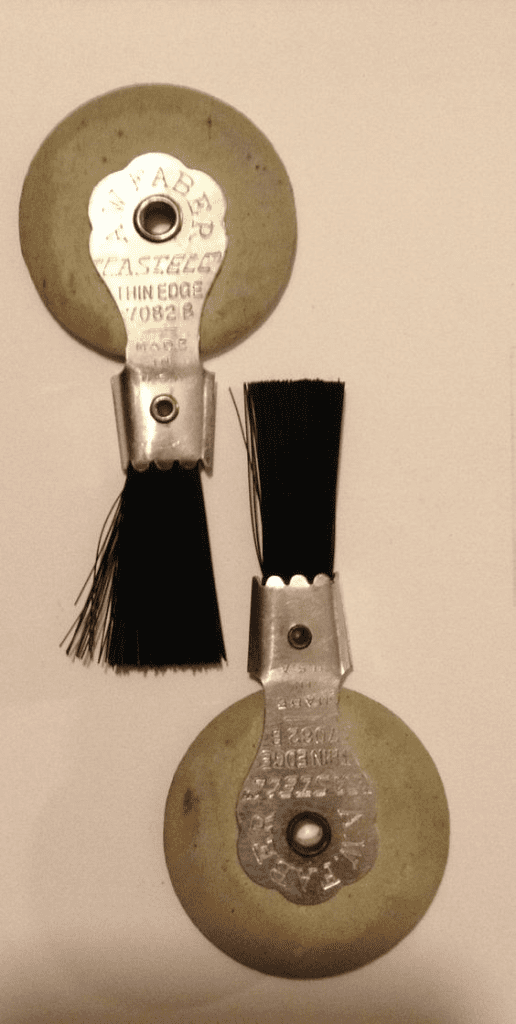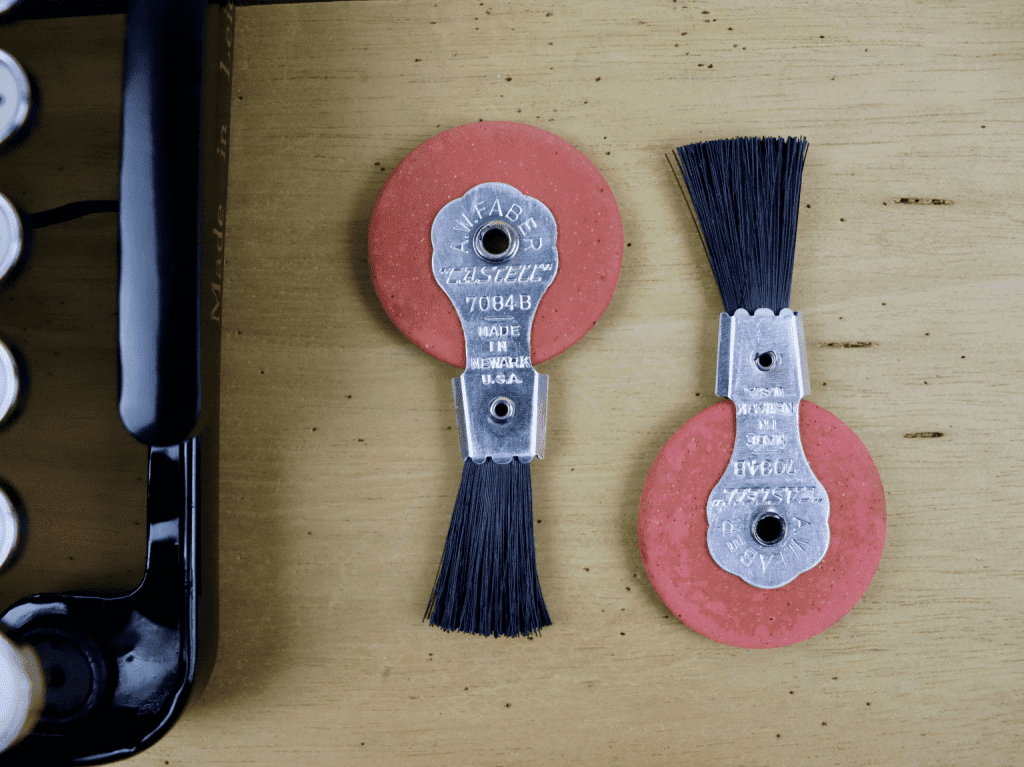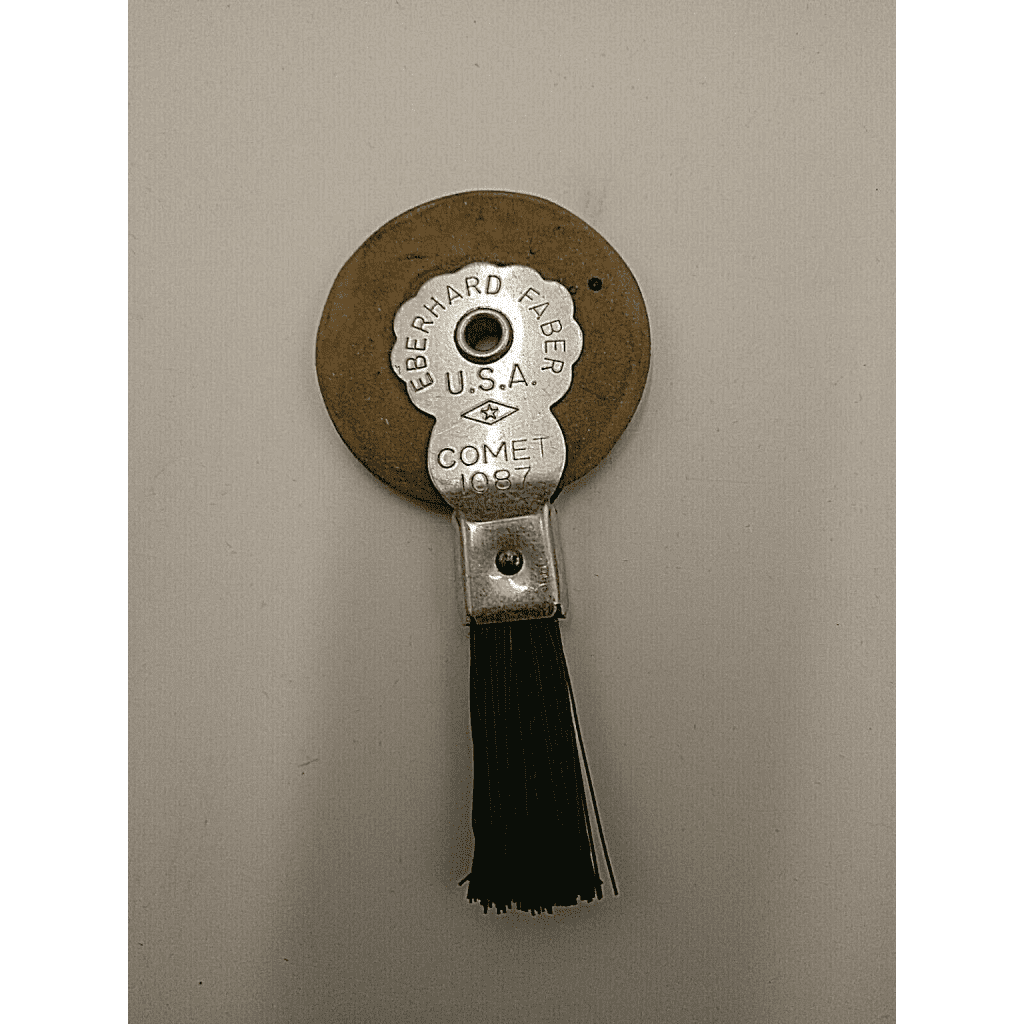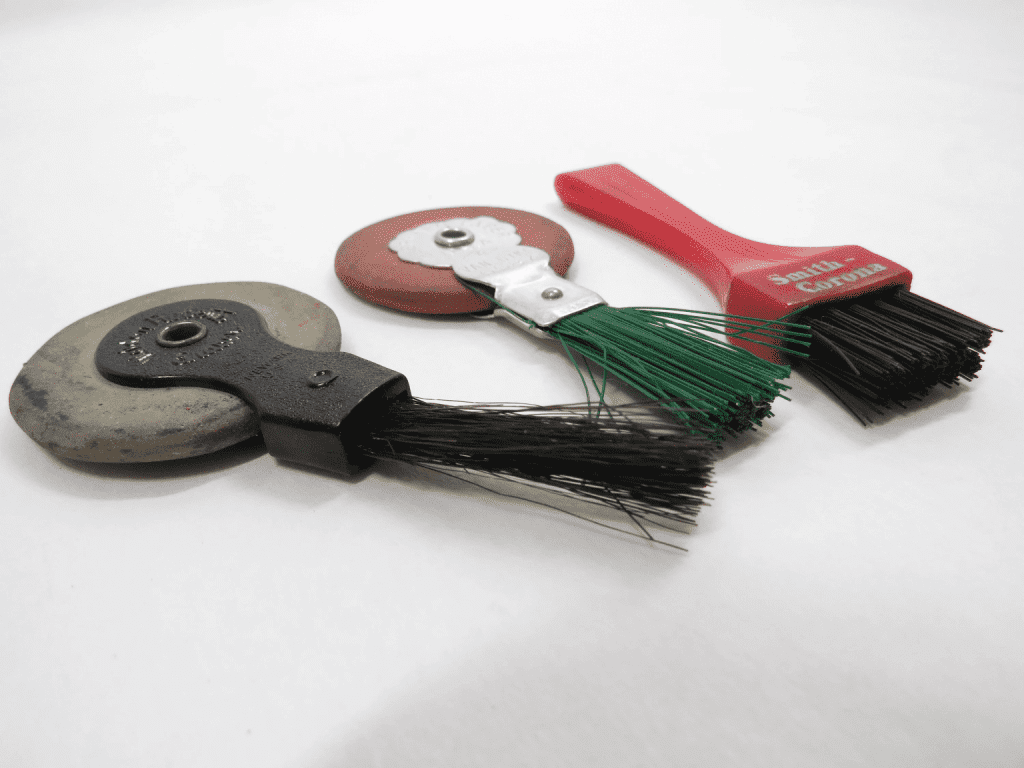In the digital age, many of us take the ease of editing for granted. With a simple click of the backspace key, errors disappear effortlessly from our screens. But before the days of spellcheck and “Ctrl+Z,” correcting typing mistakes was far from easy. For those who used typewriters, mistakes were an inevitable and frustrating part of the process. One tool, now almost forgotten, played a key role in handling these errors: the typewriter eraser brush.

What Are Typewriter Eraser Brushes?
Typewriter eraser brushes were essential tools for typists during the typewriter era. These circular erasers were often made from soft rubber materials, sometimes infused with fine abrasives to remove ink or typewriter ribbon marks from paper. Attached to these erasers was a small, delicate brush designed to sweep away any debris left behind after erasing.
In an era when typing was a manual and often unforgiving task, these tools provided a simple yet effective way to correct mistakes without having to retype an entire page. The brush ensured that no unsightly eraser remnants remained on the document, keeping the work looking clean and professional. It was a tool that every typist had within arm’s reach, a small but mighty device that kept their work neat.
A Snapshot in Time: When Eraser Brushes Were Essential
The mid-20th century was the golden age of typewriters, and during this period, typewriter eraser brushes were as common as any other office supply. Typing errors were unavoidable, and the ability to quickly and efficiently correct them was critical, especially in business or legal settings where perfection was expected. Whether you were typing out an important letter, a manuscript, or a legal document, precision was key—and so was the ability to fix mistakes cleanly.
Back then, typists didn’t have the luxury of a digital backspace key or spellcheck to catch mistakes. Once a letter or word was typed, it was physically on the paper. If a mistake was made, the only way to correct it was to manually erase it and retype the correct text in the same space. Typewriter eraser brushes made this task possible by gently removing the ink or typewriter ribbon marks without damaging the paper underneath.
For those using carbon paper to create copies, the task became even more delicate. A mistake on the original document meant that corrections had to be made on every carbon copy as well. Typewriter eraser brushes were designed to be gentle enough to handle such fragile paper, ensuring that corrections could be made without tearing or damaging the sheets.
The Decline of the Typewriter Era
As technology advanced, the typewriter’s reign began to fade. The rise of word processors in the late 20th century marked the beginning of the end for typewriters. By the time personal computers became commonplace, typewriters had all but disappeared from offices and homes. Along with them, the need for specialized tools like typewriter eraser brushes vanished too.
In the digital world, errors could be corrected with a simple press of a key. The days of carefully erasing mistakes and brushing away eraser shavings were gone, replaced by the ease and efficiency of editing software. The once indispensable typewriter eraser brush quickly became obsolete, a relic of a bygone era when typing was as much about precision as it was about skill.

A Niche Collectible for Enthusiasts
Today, typewriter eraser brushes are no longer everyday tools, but they have found a new life as niche collectibles. Vintage enthusiasts and fans of retro office supplies appreciate these tools for their simplicity and their role in a time when writing was a more labor-intensive task. Collectors often seek out these items as reminders of how far technology has come and how much easier writing and editing have become.
For those who grew up in the age of typewriters, seeing a typewriter eraser brush can evoke a wave of nostalgia. It serves as a reminder of the sound of clacking typewriter keys, the feel of ribbon ink on paper, and the satisfaction of neatly correcting a mistake without leaving a trace.
The Art of Typing: A Lost Skill
Typing on a typewriter was not just a matter of pressing keys. It was a skill that required precision, focus, and patience. Unlike today’s keyboards, which offer instant feedback and easy corrections, typewriters were mechanical machines that demanded physical effort. Each keystroke had to be deliberate, and every mistake carried the risk of ruining an entire document.

The presence of tools like typewriter eraser brushes highlights just how much effort went into creating a flawless document. Typists had to be careful and efficient, knowing that fixing a single mistake involved erasing, brushing away debris, and retyping—all without damaging the paper or leaving visible marks.
From Essential Tool to Obsolete Artifact
For younger generations, typewriter eraser brushes might seem like strange and unnecessary objects from the past. But for those who used them, these brushes were a vital part of everyday life. They were as important as correction fluid or a modern-day undo button, and without them, typing would have been a much more challenging task.
The transition from typewriters to digital word processing represents more than just a technological shift; it marks a change in how we approach writing and editing. What once required physical tools and manual corrections is now handled with a few clicks. Typewriter eraser brushes, along with the typewriters they served, now rest in the annals of history, symbols of a time when precision was achieved through patience and skill.

Conclusion: The Legacy of Typewriter Eraser Brushes
Typewriter eraser brushes may be relics of a forgotten era, but they hold an important place in the history of typing and writing. For those who used them, these tools were indispensable, allowing for neat and precise corrections in a world where every keystroke counted.
While we now rely on digital tools to handle mistakes, it’s worth remembering the ingenuity and practicality of the typewriter era. Typewriter eraser brushes, once essential, now serve as a reminder of how far technology has advanced and how much the process of writing has evolved. What was once a tedious, manual process is now fast and seamless—thanks to innovations that make tools like the typewriter eraser brush a thing of the past.


